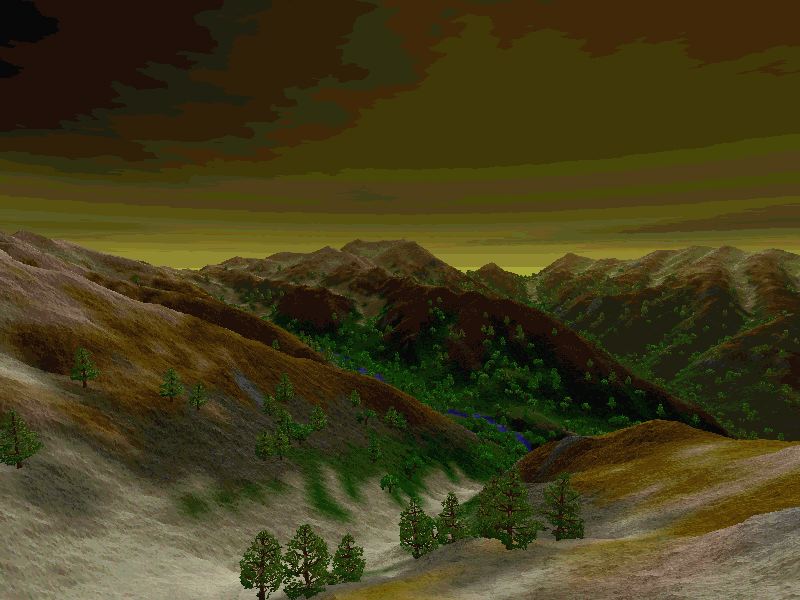
GLOSSARY OF VISTAPRO TERMS
AI
--
Artificial Intelligence. The ability of a program to incorporate expert judgment enabling it to imitate intelligent decision making.
Aliasing Artifacts
------------------
Objects which appear in a landscape which are not derived from mapping data. They may reside in the data or they may be formed as a result of the program.
Caldera
-------
The crater at the top of a volcano.
DEM
---
Digital Elevation Model is a model of a landscape reduced to three dimensional digital coordinates.
Digital Elevation Model
-----------------------
Digital Elevation Model is a model of a landscape reduced to three dimensional digital coordinates. Abbreviated: DEM.
Dithering
---------
A program function which blurs the boundaries between polygons in order to more closely simulate realism in landscape creation.
Fat Polys
---------
Foreground polygons which are relatively larger than the polygons in distant scenes. Fat Polys are a function of perspective and the accuracy of the data being rendered.
Fractal
------
Fractional dimension. Most math deals with whole numbered dimensions. One dimension is a point. Two dimensions are a line. Three dimensions are a solid. Four dimensions are a space-time solid, and so on. Fractals deal with non-whole numbered dimensions, and fractal geometry is capable of producing pictures which are remarkably similar to natural phenomena - particularly geological shapes.
Gadget
------
A gadget is a black box which contains numerical or textual information. It shows Vistapro settings and allows modification of these settings. See the Gadget section in the Graphical User Interface portion of Chapter 2 of this manual on page 2-10.
Haze
----
The atmospheric occlusion that increases with the distance between the eye and the target.
PCX
---
A standard graphic file format used by computers.
Jaggies
-------
Partial polygons which produce jagged lines often at the ridge line of a landscape and sometimes in the foreground. Jaggies distort the realism of a scene.
Olympus Mons
------------
A volcano on Mars. Olympus Mons is an extremely vast feature. The base of the volcano covers an area the size of Nebraska. Olympus Mons also has a feature which is unique within the solar system. The base of the volcano is well within the thin atmosphere of Mars. The peak of the volcano is virtually above the Martian atmosphere allowing launch to orbit by magnetic acceleration. A tramway could be constructed from the base of Mons Olympus to the top of Mons Olympus. Liquefied carbon dioxide, water, hydrogen, and oxygen (condensed from the atmosphere) could then be transported for magnetic rail launch into orbit at the top. A return from space could be accomplished with aero-braking. Therefore, Mons Olympus could become the basis for a Martian space transportation system which did not require rockets.
Polygons
--------
The basic geometric units with which Vistapro renders landscapes. A polygon is a two dimensional shape having at least three linear sides.
Ray Tracing
-----------
A method of image generation where a hypothetical ray of light is projected, reflecting off the target and ultimately colliding with the camera.
Topography
----------
Science of drawing maps representing the surface features of a region.
Topology
--------
The study of the surface features of a region.
USGS
----
United States Geological Survey. The USGS has created three dimensional maps of much of the United States, some undersea landscapes, and some extra terrestrial landscapes. Much of the work done by USGS is in the public domain and can be adapted for display by Vistapro.
XYZ Coordinates
---------------
XYZ coordinates simply refer to the three dimensions necessary to define a solid object. By translating the topology of a landscape into XYZ coordinates, the three dimensional topography can be stored in digital format and can be easily manipulated by Vistapro's landscape rendering engine.